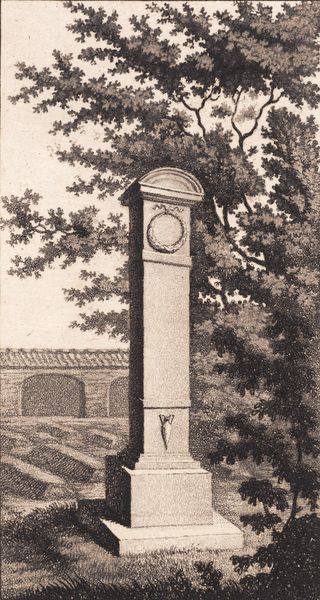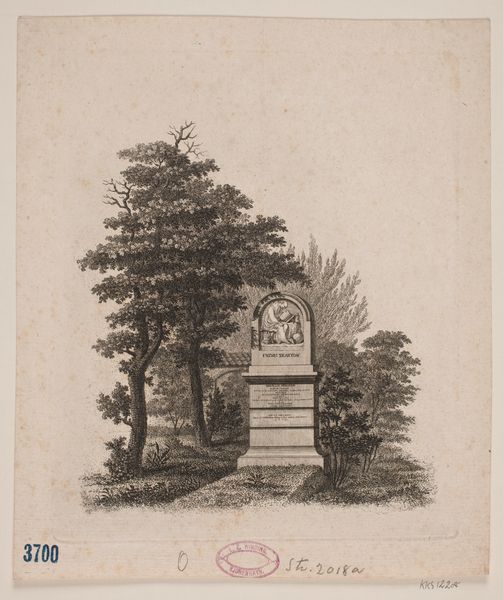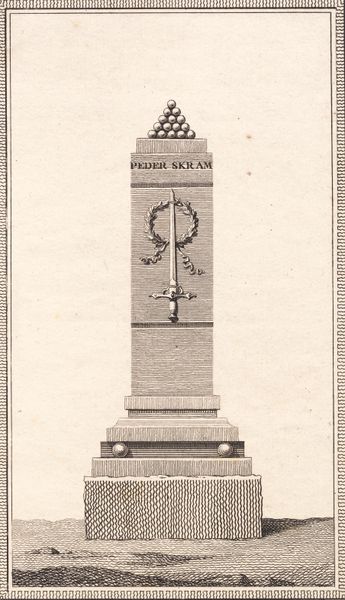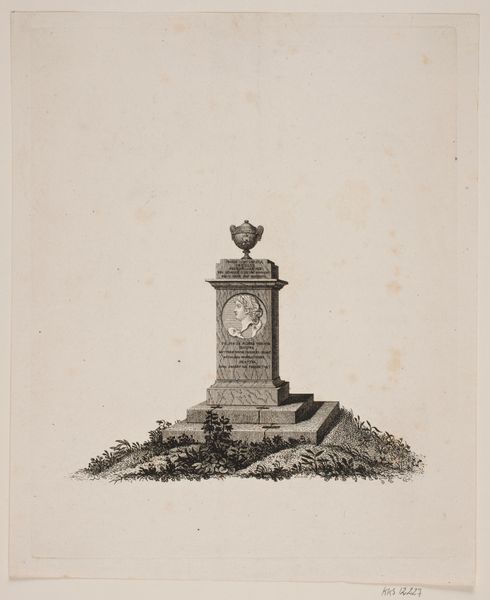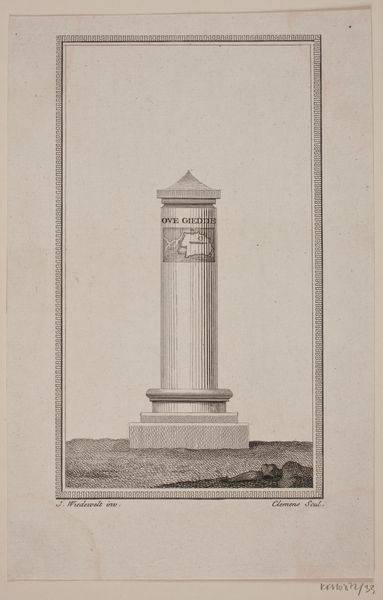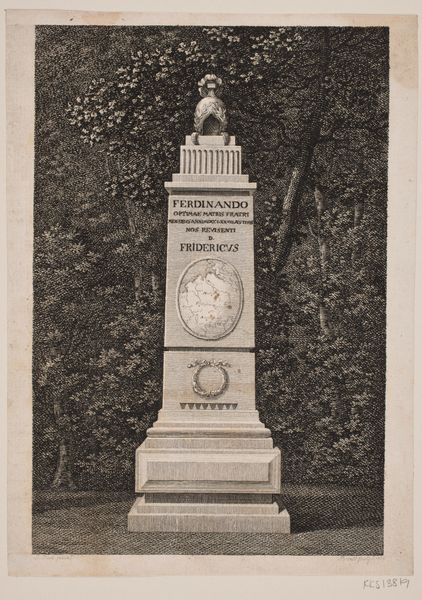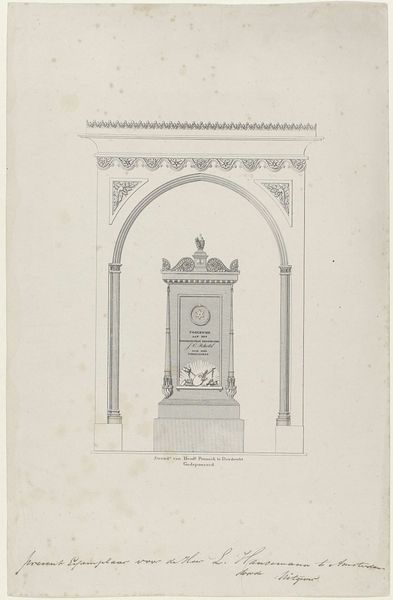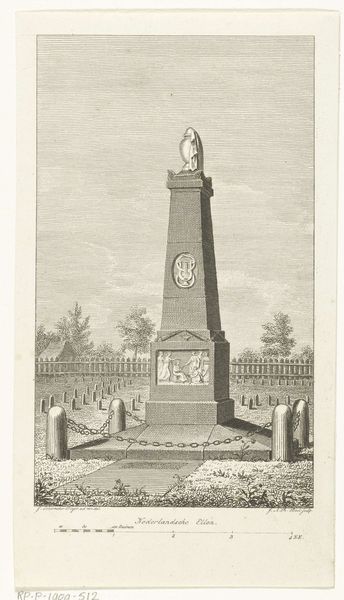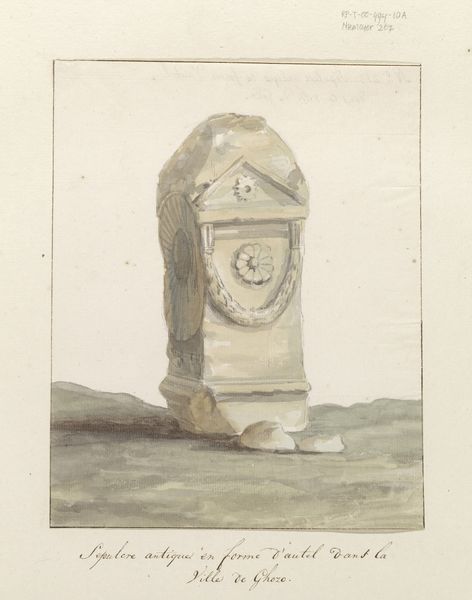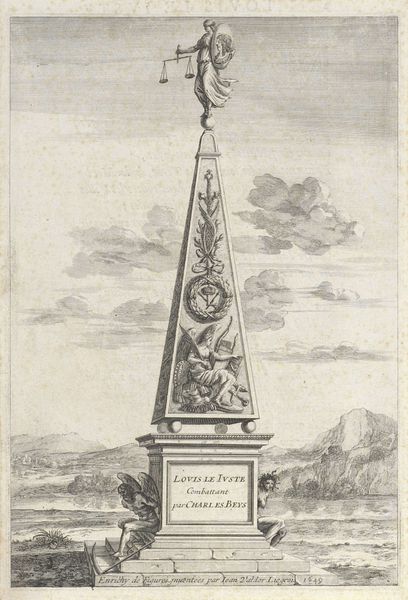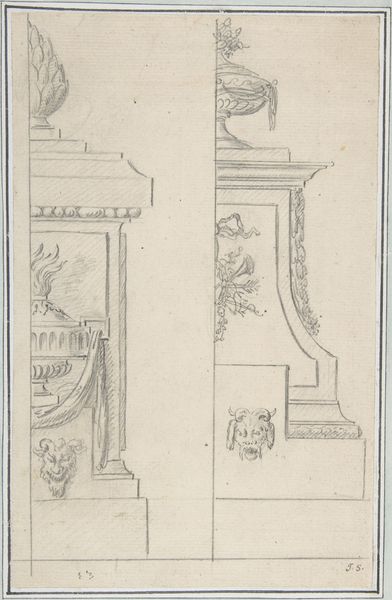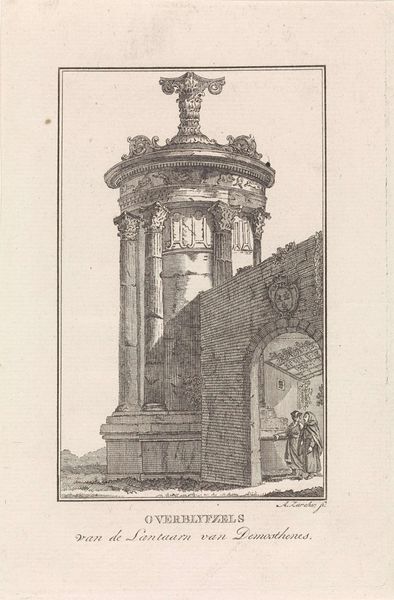
aquatint, print, etching
aquatint
etching
landscape
etching
Dimensions: 158 mm (height) x 101 mm (width) (bladmaal), 154 mm (height) (plademaal), 125 mm (height) x 67 mm (width) (billedmaal)
Editor: Here we have J.F. Clemens' "Mindestøtten for Riber," an etching and aquatint from between 1748 and 1831. The print depicts a monument or pillar amidst a somewhat overgrown landscape. The textures achieved through the etching are quite striking, creating a real sense of depth despite the limited color palette. How would you interpret the formal elements at play here? Curator: Note the pillar's stark verticality contrasted against the organic forms of the surrounding trees. The inscription at the top is framed by a wreath, drawing the eye. The artist has clearly manipulated light and shadow through the aquatint technique to articulate the various planes and surfaces within the composition. Consider how this strategic deployment of light sculpts form, particularly the fluting of the column. Are you also drawn to how the geometry contrasts the landscape? Editor: Absolutely, that tension between the structured form and the natural, almost chaotic foliage creates a compelling visual dynamic. Do you think the somewhat crude rendering takes away from its impact? Curator: On the contrary, the lines of the etching imbue it with an authentic aesthetic. This evokes a certain quality that smoother methods might forfeit. The material handling makes it honest; it shows how process and idea have unified within the artistic endeavour. How does it sit with you? Editor: That's a perspective I hadn't considered. It's interesting how focusing on the materials and their application can completely shift your perception of a piece. It has certainly provided new ideas for my next paper! Curator: Indeed. Often, the most profound understanding arises from a considered scrutiny of an artwork’s intrinsic qualities and material existence.
Comments
No comments
Be the first to comment and join the conversation on the ultimate creative platform.
